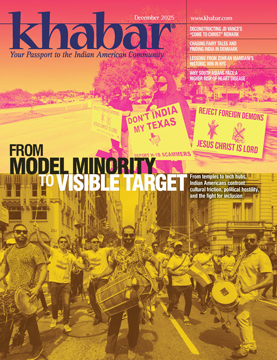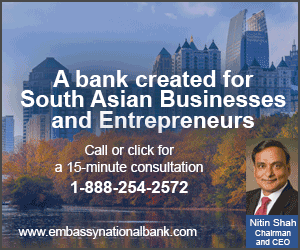Urban India's Rich Cultural Tapestry

The seamless coexistence of the modern and the Western with the ancient and the traditional creates a vibrant cultural landscape with a multitude of consumer and social options— and drastic contrasts.
Pasta, falafel, and hummus for a Diwali Party? How about coffee cafés popping up all over India’s cities, giving the beloved chai stalls at every corner a run for their money? Or the fact that English, and that too with a tinge of an American accent, has become the lingua franca for many urban youngsters. And while we are at it, how about the rising divorce rates, which, based on the narrative one prefers, is breaking families apart or liberating women? These are just some markers of the modernization and Westernization of Indian society, especially in urban India.
While this is certainly not a new trend, in the past decades, it was largely confined to a small, upwardly mobile section of society. Now, even teens growing up in slums and ghettos can be seen humming American hip-hop. Food delivery services like Zomato and Swiggy have proved to be a great equalizer, as folks living in modest chawls (multi-unit, low-cost apartments) now order Domino’s Pizza or Kentucky Fried Chicken.


…even as the corner chai shops continue to rule the roost on the streets. (Photo: Shutterstock)
Westernization, globalization, and modernity are the forces that are trending strongly in India, thanks, in no small part, to the massive 680 million-strong young population, which is also perhaps the first generation to live in multi-income families where disposable income has made it possible to aspire for new and varied experiences and indulgences. Global brands, international cuisines, and European vacations are increasingly the pursuits and passions of a large swath of an upwardly mobile middle class.
Will this mad frenzy for consumption, consumerism, and Westernization be the nemesis of India’s ancient and rich cultural heritage?
 Fear not. As many have said before, India is many countries in one. No single trend, no matter how large it may appear, can define or confine this nation of one-and-a-half billion. Just as there is a pull towards Westernization, there is an equally vigorous will in many segments of society to preserve traditional heritage and celebrate it with pride and passion.
Fear not. As many have said before, India is many countries in one. No single trend, no matter how large it may appear, can define or confine this nation of one-and-a-half billion. Just as there is a pull towards Westernization, there is an equally vigorous will in many segments of society to preserve traditional heritage and celebrate it with pride and passion.
Photo: Shutterstock

[Left photos] Modern skylines with glass buildings coexist seamlessly with ancient temples in most cities in India. Seen here is the Mumbai skyline and the centuries-old Mumba Devi Temple in the midst of the city.
Photo: Wikicommons
Take, for example, how, in Gujarat, a sense of growing dissatisfaction with modern and Western influences in Garba, the trademark dance of the festival of Navratri, is fueling a revival of traditional practices. The Nagar Brahmin community in Saurashtra, North Gujarat, is leading this movement by reviving 'Betha Garba,' a unique form of Garba that prioritizes devotion over spectacle. Unlike the commercialized Garba events dominated by Bollywood music and Western beats, Betha Garba features only devotional songs dedicated to Goddess Amba, accompanied by the simple rhythms of dholak and manjira.
Speaking about this return to roots, Jignesh Buch, a 31-year-old Kathiawari trader, says, "This Garba is characterized by a single sentiment: devotion to the Goddess. There are no [fancy variations of steps] or film songs.” The idea, says Buch, is to fend off forces that may corrupt age-old, cherished traditions.
 [Right] Just as there is a pull towards Westernization, there is an equally vigorous will in many segments of society to preserve traditional heritage. A case in point is the revival of “Betha Garba” in Gujarat. (Photo: An AI-generated rendering of Betha Garba.)
[Right] Just as there is a pull towards Westernization, there is an equally vigorous will in many segments of society to preserve traditional heritage. A case in point is the revival of “Betha Garba” in Gujarat. (Photo: An AI-generated rendering of Betha Garba.)
The coexistence of these seemingly contradictory cultural forces—extreme Westernization and an equally spirited entrenchment of native traditions is what defines modern India. Shaan Arora, a college sophomore born and raised in Atlanta, says from his India visits: “I am continually astounded by how this amalgamation of Western and traditional is so fluid in everything—food, clothing, music, conversations, and so much more. In suburban trains in Mumbai, you see a young man in jeans and a baseball cap right next to someone dressed in a white dhoti, kurta, and the traditional  Maharashtrian topi. Pepperoni pizza and paneer pasanda are sold side-by-side in street carts. And conversations morph with ease from discussing Heeramandi, the Netflix show set in the backdrop of the Indian independence movement to reruns of Friends, the American sitcom that gained worldwide following.”
Maharashtrian topi. Pepperoni pizza and paneer pasanda are sold side-by-side in street carts. And conversations morph with ease from discussing Heeramandi, the Netflix show set in the backdrop of the Indian independence movement to reruns of Friends, the American sitcom that gained worldwide following.”
As they blend ancient customs with contemporary trends, urban Indians are crafting a cultural identity that is a unique amalgamation of modern Western and traditional Indian. “There is a strong sense of patriotism and religious pride, even as many young Indians seek opportunities abroad after college and look for a more Westernized lifestyle in India,” says author and anthropologist Pankaj Mishra.
This rich and diverse cultural landscape is evident in everyday lives, from fashion, music, movies, and cuisine to advertising trends, shifting family structures, and spiritualism.
[Left] British icon Ed Sheeren and Punjabi sensation Diljit Dosanjh performing together (in Mumbai) sums up the eclectic offerings of pop culture and music in India.
A grand buffet of choices
Indians are reclaiming their culinary heritage through food festivals, revival of traditional recipes, and old family specialties. Not only are celebrity chefs promoting this trend, but citizens are also enthusiastically lapping it up and adding their own initiatives to it. As reported in The Better India, Dipali Khandelwal, a native of Jaipur, founded ‘The Kindness Meal’ with the mission of preserving and reviving forgotten dishes by focusing on generational sharing. She encourages people like Manju Kothari, a Rajasthani native, who is trying to recreate the gondh ka ladoo that her grandma used to make.
At the same time, a recent survey by Swiggy, a leading food delivery app, revealed that pizza is the second most-ordered dish after biryani. According to the Godrej Food Trends Report, the pizza market in India was a substantial $2.1 billion in 2024. Ultra-modern and uber-fancy destination restaurants featuring global cuisines are also all the rage. Not just Thai, Italian, and Continental that are dotted around most metro suburbs, but also uber-fancy destination restaurants are increasingly popular. The Scarlett House and Onrique in Mumbai, Nouba in Jaipur, Madras Cocktail in Chennai, Megu in Delhi, are just a few among dozens that make some of Atlanta’s top destination restaurants seem quite unglamorous by comparison.
Variety is indeed the spice of life in India
The desire to maintain and celebrate their rich heritage, while also embracing a global world, has resulted in a broad spectrum of lifestyles and experiences. Author Amish Tripathi highlights the deep connection many youths maintain with their cultural roots, even as they embrace Western influences. Such negotiation of cultures plays out in public spaces and personal interactions. Social media platforms have become arenas for cultural expression and debate. For example, hashtags celebrating Indian heritage, such as those pertaining to the Kumbh Mela or the Ram Mandir in Ayodhya, trend alongside posts about concerts of Ed Sheeran, Coldplay, Taylor Swift, Justin Bieber, or Katie Perry.

[Right] There can’t be a more definitive marker of tradition and heritage being well, alive, and thriving in India than the superlative Kumbh Mela. Billed as the “largest human gathering on the planet,” the Mahakumbh 2025 is expected to be attendedby a mind-boggling 450 million people over its 45 days. (Photo: Michael T Balonek/ Wikicommons)
The blazing popularity of Western singers and bands doesn’t come at the cost of losing interest in native and traditional music. Musician Jubin Nautiyal, who has performed in numerous languages, notes, "The younger audience is more connected to its roots, and it values the authenticity that folk and regional music offer. Collaborations between artists from different regions and languages have become increasingly common."
Urban India is embracing cultural icons that straddle both worlds, such as artists who mix classical Indian styles with global beats or designers who integrate Indian motifs with Western aesthetics. Fashion influencer Sufi Motiwala explains, "Merging Indian elements such as prints and motifs with Western silhouettes makes it so much more interesting and 21st-century Indian fashion."
Pop culture and identity politics
Call it a tug-of-war or a balancing act, but many youngsters in modern India find themselves pulled between the allure of a Western lifestyle and the deep-rooted pride in their traditional Indian heritage. Author and former diplomat Pavan K Varma argues that this generation is navigating a complex landscape where familial expectations, cultural identity, and modern individualism collide. “The struggle to balance respect for tradition with the pursuit of personal freedom creates a profound tension, especially in areas like career choices, marriage, and societal roles,” he says.

 The prolific Hindi-language author Chetan Bhagat observes that while young people are ambitious and aware of global trends when it comes to pop culture, “they struggle with issues of identity, cultural expectations, and societal pressures. Tradition continues to shape their worldview and choices, even as they strive for individual expression. They grapple with moral dilemmas and seek guidance. This suggests a lingering influence of traditional values, even as they navigate a more liberalized world.”
The prolific Hindi-language author Chetan Bhagat observes that while young people are ambitious and aware of global trends when it comes to pop culture, “they struggle with issues of identity, cultural expectations, and societal pressures. Tradition continues to shape their worldview and choices, even as they strive for individual expression. They grapple with moral dilemmas and seek guidance. This suggests a lingering influence of traditional values, even as they navigate a more liberalized world.”
[Left photos] From reruns of American sitcoms like Friends to homegrown serials like Heeramandi, Indians traverse prolifically through a wide spectrum of entertainment choices.
In Mumbai, Arun Bose observes a shift in Diwali celebrations among his peers. The 26-year-old notes that lavish card parties have given way to smaller, more intimate gatherings with close friends and family. “Every year, my friend group of four takes turns at hosting Diwali-themed parties. Alongside traditional sweets, we also serve food we love—pasta, hummus platters, or Chinese food. There is no pressure to keep it all Indian.”
Twenty-two-year-old Delhi media student Simran Devyani describes the internal conflict she experiences celebrating Diwali. She explains, “I like to celebrate the spirit of the festival by lighting diyas, creating rangolis, and performing Lakshmi Puja, which remain central to the celebration. These customs honor the festival’s symbolism of prosperity and the triumph of light over darkness. However, I hate firecrackers. The kind of pollution they cause, as well as distress to sick or old human beings and animals, makes me want to stay away from them. And yet, I haven’t been able to convince my extended family to give up this one tradition.” She also shares that many of her friends have begun choosing to buy biodegradable rangoli powders and LED lights to reduce environmental impact, moving away from more polluting practices such as large-scale fireworks.
Online debates often reflect the generational tension between liberal ideals and conservative values. Streaming shows like Heeramandi spark discussions about historical and cultural narratives. In the digital world, young people are divided between those championing tradition and those embracing liberal or even socialist views.
Actor and filmmaker Nandita Das points out the polarization that is evident in reactions to religious and cultural portrayals in films. This dichotomy is further exemplified by contrasting views on patriotism and globalization among young Indians. A recent example was the Indian government's proposal to use ‘Bharat’ instead of ‘India,’ which ignited a debate online. “Most of the ones taking a position online were young people,” says pulp fiction author Chetan Bhagat. “While some supported the move, seeing it as a way to reclaim the country's ancient heritage and shed its colonial past, others viewed it as a politically motivated attempt to erase the country's multicultural identity and impose a singular identity.”
 These debates also highlight the role of social media as both a platform for connection and a battleground for ideological conflicts. The rise of influencers who engage with these issues underscores their importance to India’s cultural discourse. Similarly, influencers focusing on wellness and self-improvement often incorporate Indian practices like yoga and Ayurveda, presenting them as tools for a balanced, modern lifestyle.
These debates also highlight the role of social media as both a platform for connection and a battleground for ideological conflicts. The rise of influencers who engage with these issues underscores their importance to India’s cultural discourse. Similarly, influencers focusing on wellness and self-improvement often incorporate Indian practices like yoga and Ayurveda, presenting them as tools for a balanced, modern lifestyle.
[Right] “There is a strong sense of patriotism and religious pride, even as many young Indians seek opportunities abroad after college and look for a more Westernized lifestyle in India,” says author and anthropologist Pankaj Mishra.
The shifting mores in marriage and family structures
Author Pankaj Mishra talks about the conflict arising from the clash of traditional Indian values and Western influences. "Marriage, once seen as a duty and a bond between families, is now increasingly viewed as a personal contract between two individuals," he says. According to him, this shift is a source of immense tension for the young.
This evolving perception of marriage reflects broader societal shifts and the growing agency of women in India. While arranged marriages within caste and community continue to be prevalent, divorce rates, though low, are rising as financial independence empowers women to leave unhappy marriages.
Interestingly, young Indians are also redefining the rituals surrounding marriage. Couples increasingly opt for eco-friendly weddings that reduce waste and honor sustainability. These changes signify a shift in how marriages are celebrated and the values they embody.
 Spirituality in a new spirit
Spirituality in a new spirit
A recent survey by India's Union Ministry of Travel and Tourism reveals a surge in Gen Z booking spiritual tours to ancient cities like Ayodhya, Rishikesh, and Varanasi. "The wave of spiritual and religious tourism has reached unprecedented heights in 2024, driven by the desire of Gen Z. It demonstrates how we are reclaiming our past," says Amish Tripathi, the author. While young Indians visit spiritual destinations like Varanasi and Haridwar, their motivations are shifting. According to Nirmal Awasthi, an assistant professor at Banaras Hindu University, these trips are often driven by cultural exploration rather than traditional pilgrimage. Awasthi, who conducts tours in Varanasi, notes that young travelers seek to understand the city's broader historical and cultural significance, including its ancient civilization and the bhakti movement of Kabir. This suggests a growing interest in engaging with spirituality on a more intellectual and cultural level, rather than purely religious.
[Left] “Caught between traditions and modern values, between the influence of Western civilization and their own traditions, young Indians are selfaware and know their priorities,” says author and former diplomat Pavan K Varma.
"I think the most important Indian tradition, the one that finds mention even in our scriptures but has been forgotten, is that of questioning and rebellion. Our scriptures encourage us to question everything, even God. In recent years, the youth have been trying to revive this tradition,” says Tripathi.
This results in a dynamic approach to spirituality as well as integrating traditional practices like yoga and meditation with contemporary wellness trends. Writer Durjoy Dutta exemplifies this when she says, “I believe in a higher power but don't feel the need to give in to elaborate rituals. I think many youngsters today are interpreting God in their own way. My spiritual well-being is balanced with the faith in traditional methods of ensuring physical well-being through yoga and mental wellbeing through meditation,” she says.
While predominantly religious, young Indians are wary of social instability fueled by religious extremism, says Varma. "If turmoil due to unending religious extremism harms their economic interests and security, they will reject it," he states. "Young women, even those who wear sarees, are angered when dictated to about whom they can meet, how they should dress, or where they should go."
Native pride, global aspirations
 “I want the cultures of all lands to be blown about my house as freely as possible. But I refuse to be blown off my feet by any," said Mahatma Gandhi. Going by the vast panorama of cultural practices in the country, Indians appear to resonate with this sentiment. While the allure of Westernization is strong, there is a robust resurgence of pride in their Indian identity. As Varma eloquently puts it, "Caught between traditions and modern values, between the influence of Western civilization and their own traditions, young Indians are self-aware and know their priorities. They will not be taken for granted. They respect their culture and values but refuse to allow their dreams to be stifled in the name of outdated traditions. They appreciate nationalism and are patriotic but are wary of hyper-nationalism or ultra-religious thought." This dynamic interplay between tradition and modernity is not a threat to their heritage but an opportunity to partake in the best of both worlds—thereby creating a rich tapestry of cultures.
“I want the cultures of all lands to be blown about my house as freely as possible. But I refuse to be blown off my feet by any," said Mahatma Gandhi. Going by the vast panorama of cultural practices in the country, Indians appear to resonate with this sentiment. While the allure of Westernization is strong, there is a robust resurgence of pride in their Indian identity. As Varma eloquently puts it, "Caught between traditions and modern values, between the influence of Western civilization and their own traditions, young Indians are self-aware and know their priorities. They will not be taken for granted. They respect their culture and values but refuse to allow their dreams to be stifled in the name of outdated traditions. They appreciate nationalism and are patriotic but are wary of hyper-nationalism or ultra-religious thought." This dynamic interplay between tradition and modernity is not a threat to their heritage but an opportunity to partake in the best of both worlds—thereby creating a rich tapestry of cultures.
[Right] “I want the cultures of all lands to be blown about my house as freely as possible. But I refuse to be blown off my feet by any,” said Mahatma Gandhi. Going by the vast panorama of cultural practices and consumer experiences in the country, Indians appear to resonate with this sentiment. (Photo: Wikicommons)
Deepali Nandwani is a Mumbai-based freelance journalist, a columnist on luxury with CNBC-TV18, and an aficionado of everything heritage.
Enjoyed reading Khabar magazine? Subscribe to Khabar and get a full digital copy of this Indian-American community magazine.
blog comments powered by Disqus










